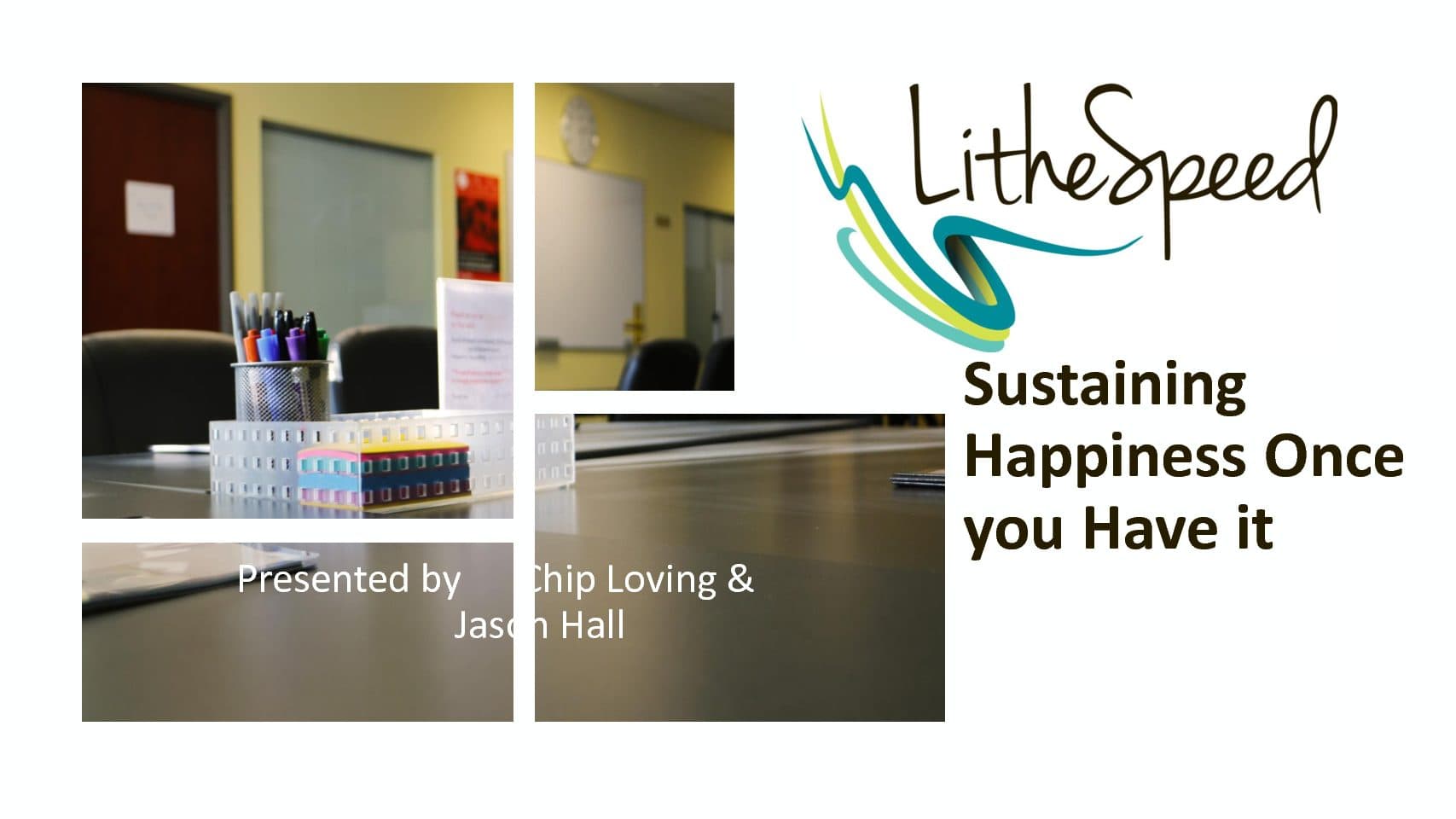Jason: Thanks for having us. Quick poll: How many of you actively seek out apathetic, low-energy, disillusioned employees?
Chip: Got one in the back.
Jason: There’s one guy! Would he run a dungeon or something? Just to clarify, I meant as a means of retention and recruitment.
Chip: Changing the answer now, huh?
Jason: Yeah, that was actually a valid response. But here’s the point: Happy employees equal engaged employees. Engaged employees lead to higher productivity, higher customer retention, increased innovation, and higher employee retention. The research is out there; we’re not here to make that case. That case has been made.
Instead, we want to talk about what happens after you get happy employees. How do you keep them happy? Happiness isn’t a one-time initiative. It requires sustained effort. We’re going to share how we’ve approached this in our organization through a unique reward system.
Common Employee Reward Systems
Most companies reward employees in similar ways: bonuses, team lunches, corporate perks like massages (thanks, IC Agile), or chocolates from companies like Deloitte. These are great, but one thing often goes unspoken—how these rewards are actually distributed.
Most reward systems are built on a hierarchical meritocracy. The idea that an individual, through sheer hard work, can rise from the mailroom to the boardroom. This system encourages individual incentives, which isn’t inherently bad, but it has its limits—especially in industries rooted in teamwork and collaboration.
Think about individual bonuses or spot awards. Most require approval. That means, as an employee, I have to ask myself:
- Am I going to sacrifice time on my objectives to help a teammate, knowing my contribution may not be recognized?
- Would I take that risk if there’s a chance my spot award nomination doesn’t even get approved?
Probably not. The system isn’t designed to promote selfless teamwork.
A Different Approach: Peer-Based Recognition
At our company, the founders wanted to move away from leadership-based decision-making for bonuses. So, they carved out a portion of the profit share and gave employees control over how it was distributed.
Every quarter, we would meet and briefly discuss the last three months. Each person would receive 50 pennies, which they could distribute among their peers to recognize contributions. This was a groundbreaking experience for me.
Jason: Before I talk about the issues with this system, I want to acknowledge that it solved one major problem—it was transparent and peer-based. Everyone saw the distribution of rewards, and every voice was heard.
But let’s do a quick exercise. Think back three months—what’s the last good thing someone did for you? Now share it with the person next to you.
How many of you came up with something easily? Not many, right? That’s the problem. Our memory is biased toward recency. If we struggle to recall a single good deed from three months ago, how can we expect to accurately recognize an entire quarter’s worth of contributions?
The Issues with Quarterly Peer Recognition
Chip: There was also a gap in the feedback loop. People did great things, but by the time recognition rolled around, those contributions were forgotten.
One quarter, I was actively contributing, pushing initiatives forward, and helping the team. When it came time to distribute pennies, I expected to be recognized. Instead, when the jars were revealed—mine was practically empty.
Jason: That was a "WTF moment" for Chip. And it highlighted two major problems:
- Recency bias: People only remembered contributions from the last few weeks.
- Transparency ≠ Awareness: Just because information was accessible didn’t mean it was being acknowledged.
Creating a More Effective Recognition System
After discussing these challenges, we realized two things:
- We needed a system that encouraged real-time recognition.
- Transparency alone wasn’t enough—we needed to create awareness.
So, we introduced Recognize, a remarkably simple system.
How Recognize Works
- Each employee gets 50 recognitions per quarter.
- Recognitions can be sent immediately via email to the entire company.
- Each recognition highlights a specific contribution and is visible to all employees.
- At the end of the quarter, recognitions determine the profit-sharing distribution.
Most importantly, there’s no approval process. If I see someone doing something valuable, I can recognize them instantly—no waiting for a quarterly meeting.
The Impact
Since implementing Recognize, we’ve seen significant improvements:
- Increased visibility for support staff: Previously, the majority of recognition went to revenue-generating employees. Now, we see more acknowledgments for back-office staff, who keep the company running.
- More timely recognition: No more waiting months to acknowledge someone’s contributions.
- No forced recognition: If someone doesn’t use all their recognitions, they roll back into the general pool.
- Created a "Positive Ledger": Research shows that high-performing teams maintain a 6:1 praise-to-criticism ratio. Recognize helps us naturally maintain a culture of positivity.
Final Thoughts
How can you take an existing system and make it better? Sustaining happiness isn’t just about rewards—it’s about recognition, awareness, and fairness.
Chip: If this doesn’t make you smile, I don’t know what will.
Jason: Thank you!






